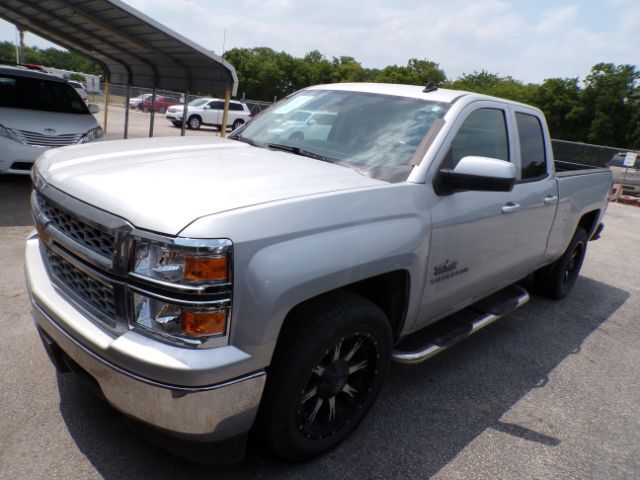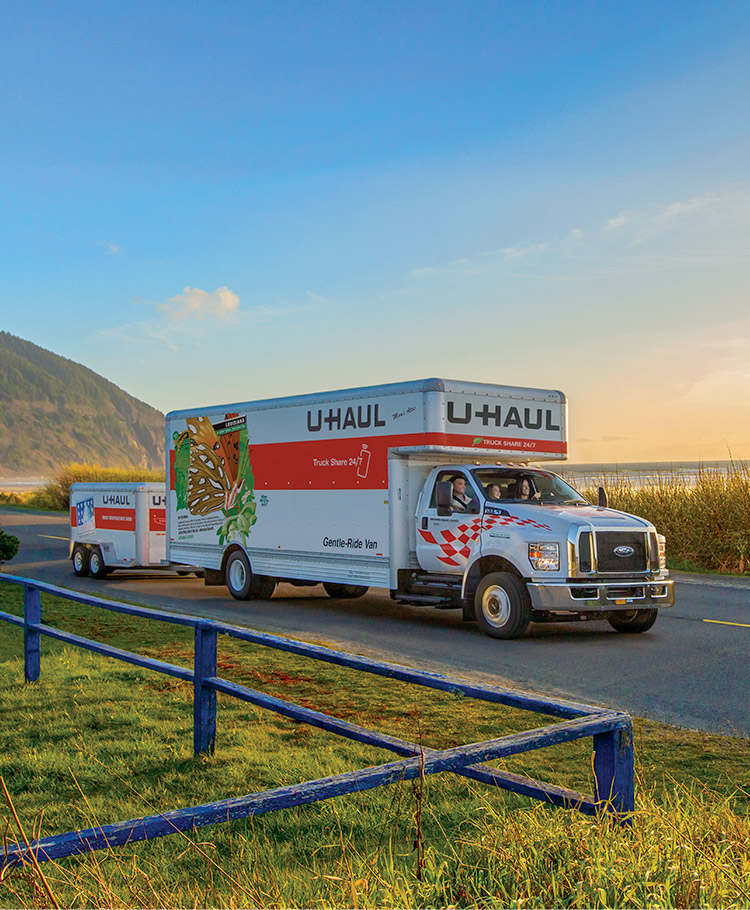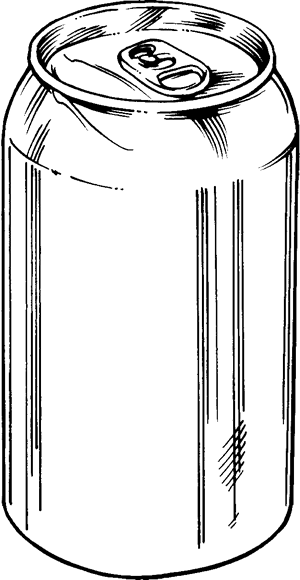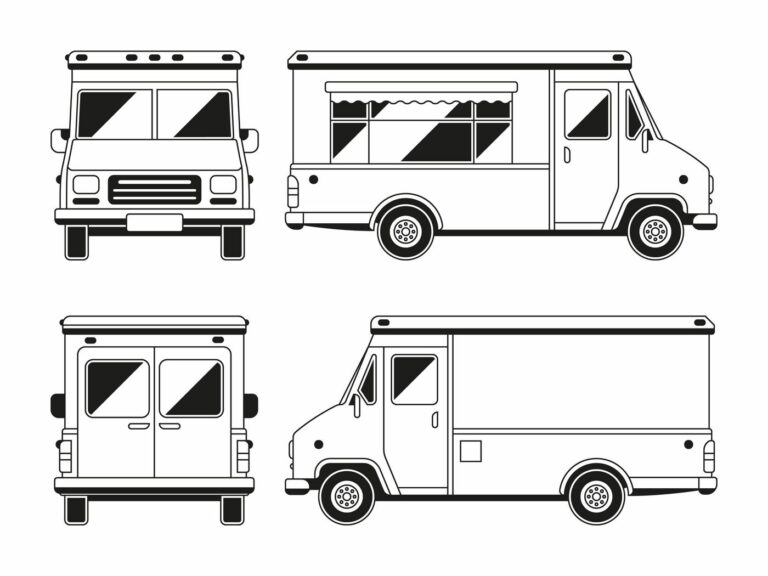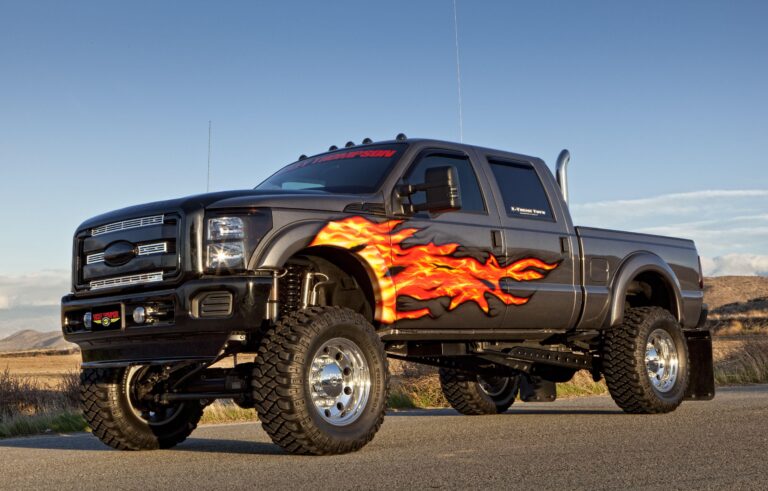Does Any One Make Replacement Wood Panels For A Box Truck? Uncovering Your Options
Does Any One Make Replacement Wood Panels For A Box Truck? Uncovering Your Options cars.truckstrend.com
For businesses relying on box trucks, the cargo area is the heart of their operation. It’s where goods are stored, transported, and protected from the elements and road hazards. Over time, however, the interior wood panels of a box truck – typically plywood or a similar material – take a beating. Scratches, dents, punctures, moisture damage, and general wear and tear are inevitable. When these panels deteriorate, they not only compromise the aesthetic appeal of your truck but, more importantly, can lead to structural weaknesses, cargo damage, and even safety hazards.
This often leads truck owners to a pressing question: Does anyone make direct replacement wood panels for a box truck? The simple answer, while nuanced, is generally no, not in the sense of a universal, off-the-shelf, pre-cut kit that fits every make and model. Unlike automotive body panels, box truck interiors are highly variable due to different manufacturers, custom builds, truck lengths, and specific design configurations. However, this doesn’t mean you’re left without options. This comprehensive guide will delve into the various avenues available for replacing or repairing your box truck’s wood panels, from DIY solutions to professional services, helping you make an informed decision to get your truck back in top shape.
Does Any One Make Replacement Wood Panels For A Box Truck? Uncovering Your Options
Understanding Box Truck Panel Materials: Why Wood?
Before diving into replacement options, it’s helpful to understand why wood, specifically plywood, is so commonly used in box truck interiors:
- Cost-Effectiveness: Plywood is a relatively inexpensive material compared to metals or advanced composites.
- Ease of Workability: It can be cut, drilled, and shaped with standard tools, making installation and repair straightforward.
- Structural Support: Depending on its thickness and grade, plywood can offer significant structural integrity, especially when laminated or reinforced.
- Insulation & Sound Dampening: Wood provides a degree of thermal and acoustic insulation, which can be beneficial for certain types of cargo.
- Weight: While not as light as some composites, plywood offers a good strength-to-weight ratio for its cost.
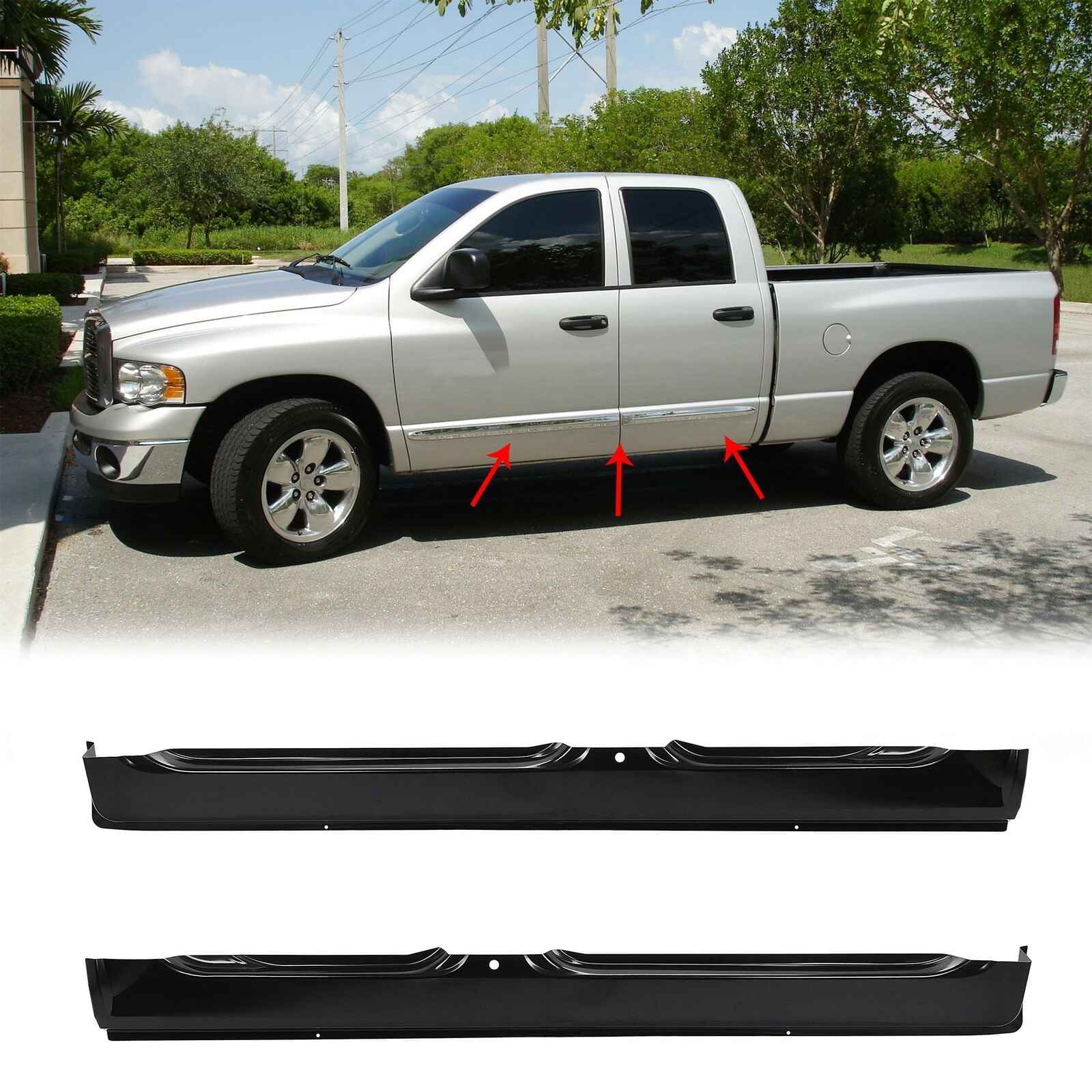
However, wood also has its vulnerabilities. It’s susceptible to moisture damage (rot, warping), impacts, abrasion, and fungal growth if not properly maintained or sealed. This susceptibility is precisely why replacement becomes necessary over time.
The Quest for Off-the-Shelf Replacement Panels: Is it a Myth?
As mentioned, finding a "one-size-fits-all" pre-cut replacement panel kit for your specific box truck model is highly unlikely. Truck manufacturers generally don’t produce and stock these as aftermarket parts. The sheer variety in truck body designs, even within the same brand over different model years, makes this impractical.
What is available, however, are raw materials and generic cargo liner panels that can be cut and adapted to fit your truck. This distinction is crucial. You’re not buying a panel for your truck; you’re buying a material to make a panel for your truck.

Option 1: Sourcing Raw Materials and DIY Replacement
For many box truck owners, especially those with some basic carpentry skills and tools, the most common and cost-effective approach is to purchase raw sheet materials and fabricate the replacement panels themselves.
Suitable Wood Materials for Box Truck Panels:
When choosing wood for your DIY project, consider durability, moisture resistance, and weight:
- Standard Plywood (CDX or ACX): Common and affordable. CDX is good for structural applications, while ACX has one finished side. Needs good sealing.
- Marine-Grade Plywood: Constructed with waterproof glue and void-free core, making it highly resistant to moisture and delamination. Excellent for wet environments but more expensive.
- Birch Plywood: Known for its strength, stability, and smooth surface. It’s often used for higher-quality interior finishes.
- Oak Plywood: Offers superior hardness and durability but is heavier and more expensive.
- Treated Plywood: Chemically treated to resist rot, fungi, and insects. Be aware that some treatments can be corrosive to certain metals.
- Laminated Plywood: Often features a durable top layer (e.g., fiberglass reinforced plastic – FRP) bonded to plywood, offering superior impact and moisture resistance.
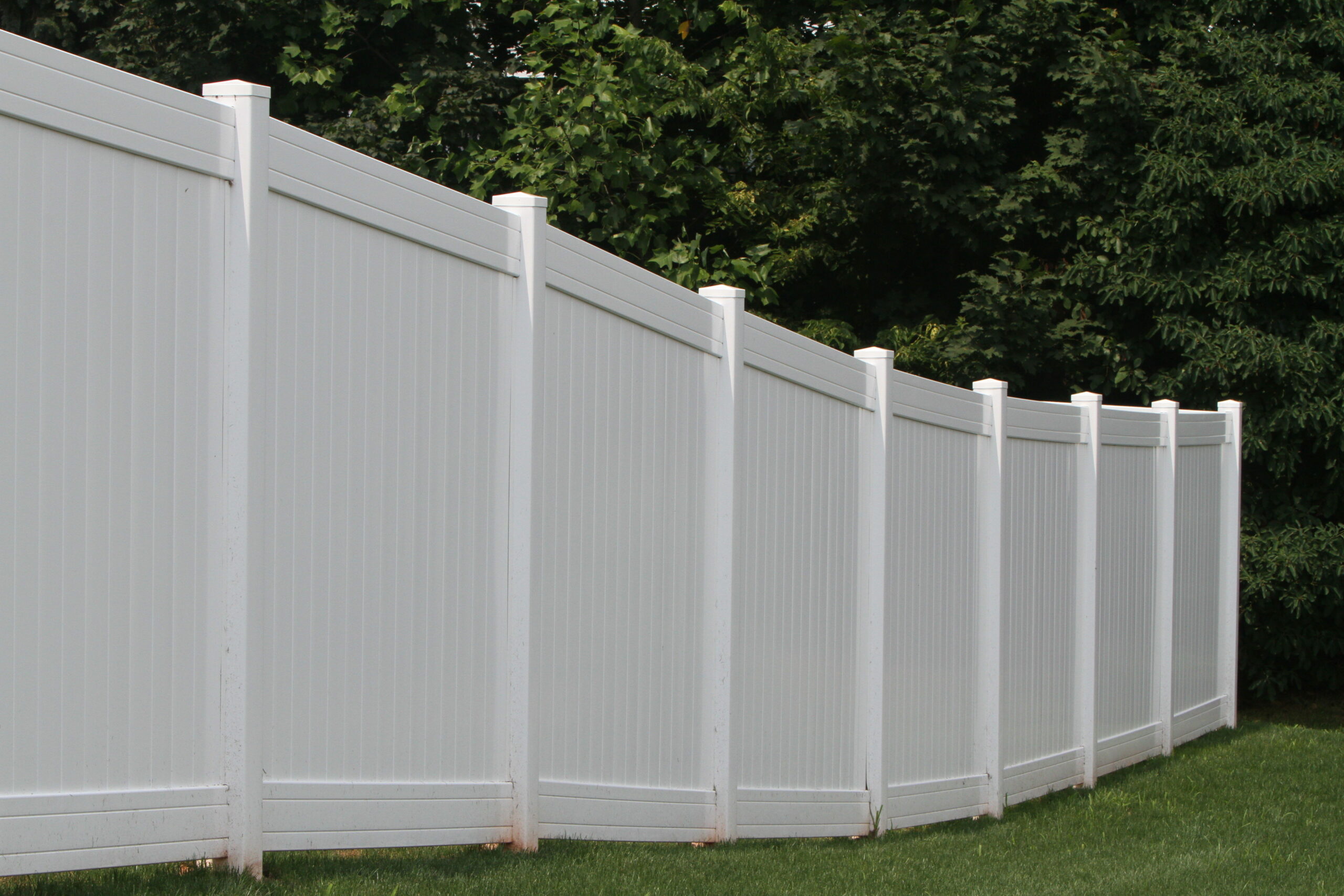
Essential Tools for DIY:
- Measuring Tape: Accurate measurements are critical.
- Circular Saw or Table Saw: For precise cutting of large sheets.
- Jigsaw: For cutting curves or intricate shapes (e.g., around wheel wells).
- Drill/Driver: For pilot holes and fastening panels.
- Screws, Bolts, or Rivets: Matching the original fasteners or choosing more robust alternatives.
- Sealant/Caulk: For waterproofing seams and edges.
- Pry Bar/Crowbar: For removing old panels.
- Personal Protective Equipment (PPE): Safety glasses, gloves, dust mask.
Step-by-Step DIY Guide:
-
Assessment and Measurement:
- Thoroughly inspect all damaged panels. Identify which ones need full replacement versus repair.
- Carefully measure the dimensions of each panel to be replaced. Note any cutouts for lights, vents, or wheel wells. It’s often best to remove an intact old panel to use as a template.
- Document the thickness of the existing panels.
-
Panel Removal:
- Remove all fasteners (screws, bolts, rivets) securing the old panels.
- Carefully pry the old panels away from the truck frame. Be mindful of any wires or insulation behind them.
-
Material Selection and Cutting:
- Purchase your chosen wood sheets based on your measurements and material preference.
- Transfer your measurements and templates onto the new sheets.
- Cut the new panels precisely using a circular saw or table saw. Use a jigsaw for any complex cutouts. Accuracy here is paramount for a good fit.
-
Installation:
- Fit each new panel into its designated position. Check for a snug fit.
- Drill pilot holes for fasteners, especially if using screws, to prevent splitting the wood.
- Secure the new panels using appropriate fasteners. Ensure they are tightened securely but not over-tightened, which can strip threads or damage the wood.
-
Sealing and Finishing:
- Apply a high-quality sealant (e.g., marine-grade silicone or polyurethane caulk) to all seams and edges where the panels meet the truck frame or other panels. This is crucial for preventing moisture intrusion.
- Consider applying a protective finish to the wood (e.g., paint, varnish, or a clear sealant) for added durability and moisture resistance.
Benefits of DIY:
- Cost Savings: Significantly cheaper than professional installation.
- Custom Fit: You can tailor the panels precisely to your truck’s specifications.
- Learning Experience: Develop valuable skills.
Challenges of DIY:
- Time-Consuming: Can take several hours to a full day or more, depending on the extent of damage.
- Requires Tools and Skill: Not everyone has the necessary equipment or carpentry experience.
- Potential for Errors: Mistakes in measurement or cutting can lead to wasted material.
Option 2: Professional Fabrication and Installation
If you lack the time, tools, or confidence for a DIY project, or if the damage is extensive and complex, hiring a professional is a wise investment.
Who to Contact:
- Truck Body Repair Shops: Many shops specializing in commercial truck repair can handle interior panel replacement.
- Custom Fabrication Shops: Businesses that custom-build or modify vehicle interiors often have the expertise.
- Trailer Repair Specialists: Similar to truck body shops, they are adept at working with large panel sections.
What Professionals Offer:
- Expert Material Sourcing: They often have access to higher-grade materials, including laminated plywoods or advanced composites (like FRP), that may not be readily available to the public.
- Precision Cutting and Installation: Using professional-grade tools, they ensure accurate cuts and a clean, secure installation.
- Structural Integrity: They can assess and repair underlying frame damage if necessary, ensuring the panels contribute to the truck’s overall structural soundness.
- Warranty: Reputable shops typically offer a warranty on their work and materials.
Benefits of Professional Service:
- Quality Finish: Expect a professional, durable, and aesthetically pleasing result.
- Durability: Professionals often use superior materials and installation techniques for longevity.
- Time Savings: You avoid the labor and time commitment.
- Peace of Mind: Knowing the job is done correctly by experts.
Challenges of Professional Service:
- Higher Cost: This is the primary drawback, as you’re paying for materials, labor, and expertise.
Important Considerations for Panel Replacement
Regardless of whether you go DIY or professional, keep these points in mind:
- Material Choice is Key: Match the material to your cargo and usage. If you haul wet items, invest in marine-grade or FRP. If impacts are common, consider thicker material or a more resilient surface.
- Fasteners Matter: Use corrosion-resistant fasteners (e.g., galvanized, stainless steel) to prevent rust streaks and ensure long-term security.
- Seal Everything: Moisture is the enemy of wood. Ensure all seams, edges, and fastener points are properly sealed to prevent water intrusion.
- Ventilation: For certain cargo (e.g., produce, chemicals), adequate ventilation is crucial. Ensure new panels don’t obstruct existing vents.
- Load Bearing vs. Liner: Understand if the panel is merely a protective liner or if it contributes to the structural integrity of the truck body. Most box truck panels are primarily liners but still need to be robust.
Beyond Wood: Alternative Panel Materials
While the question specifically asks about wood, it’s worth noting that other materials offer excellent alternatives, often with superior performance:
- FRP (Fiberglass Reinforced Plywood): A common choice. It’s plywood with a durable fiberglass layer on one or both sides. Highly impact-resistant, moisture-resistant, and easy to clean.
- HDPE (High-Density Polyethylene): A plastic sheet material that is lightweight, chemical-resistant, moisture-proof, and easy to clean. Great for specific cargo types.
- Aluminum: Lightweight, strong, and rust-proof. Can be more expensive and harder to work with DIY.
- Composite Panels: Various engineered materials combining different layers (e.g., foam core with metal or plastic skins) for specific properties like extreme lightness or insulation.
These alternatives can be a significant upgrade, offering enhanced durability and longevity, though often at a higher cost.
Practical Advice and Actionable Insights
- Regular Inspection: Periodically check your truck’s interior panels for signs of wear, moisture, or damage. Early detection can prevent minor issues from becoming major repairs.
- Don’t Ignore Small Damage: A small crack or delamination can quickly worsen, especially with vibration and moisture. Address it promptly.
- Measure Twice, Cut Once: This old adage is paramount for DIY panel replacement. Precision saves time and money.
- Prioritize Moisture Protection: No matter the material, ensuring the panels are properly sealed against water is the most critical step for longevity.
- Consider Your Cargo: Tailor your panel material and thickness to the type of goods you transport. Heavy, shifting loads require robust panels.
- Safety First: Always wear appropriate personal protective equipment (PPE) when working on your truck.
Conclusion
While the dream of purchasing a pre-cut, universal "replacement wood panel kit" for your box truck remains largely a myth, the reality offers practical and effective solutions. Whether you choose the hands-on, cost-effective route of sourcing raw materials and undertaking a DIY replacement, or opt for the precision and durability offered by professional fabrication and installation, your box truck’s interior panels can be restored to excellent condition.
The key lies in understanding your options, selecting the right materials for your needs, and prioritizing proper installation and sealing. Investing in quality replacement panels is not just about aesthetics; it’s about protecting your valuable cargo, maintaining the structural integrity of your vehicle, and ensuring the longevity and efficiency of your box truck operations.
Price Table: Estimated Costs for Box Truck Panel Replacement
Please note that these are estimates and actual costs can vary significantly based on your geographic location, material supplier, the specific truck model and size, the extent of damage, and the complexity of the job. Prices for professional services include both material and labor.
| Category | Item/Service | Estimated Cost Range (USD) | Notes |
|---|---|---|---|
| DIY Material Costs | (Per 4×8 sheet, unless specified) | ||
| Standard Plywood (CDX/ACX) | $30 – $60 | Good for general use; requires sealing. | |
| Marine-Grade Plywood | $80 – $150 | Superior moisture resistance; recommended for high humidity or wet cargo. | |
| Birch Plywood | $60 – $120 | Strong, smooth finish; good for general cargo. | |
| Treated Plywood | $70 – $130 | Rot/insect resistant; check for fastener compatibility. | |
| FRP (Fiberglass Reinforced Plywood) | $150 – $300 | Excellent durability, impact & moisture resistance; often laminated to plywood. | |
| HDPE (High-Density Polyethylene) | $100 – $250 | Lightweight, chemical/moisture resistant; ideal for specific cargo. | |
| Fasteners (screws, rivets) | $20 – $50 (per box/pack) | Rust-resistant preferred. | |
| Sealant/Caulk (per tube) | $5 – $20 | Marine-grade silicone or polyurethane recommended. Multiple tubes may be needed. | |
| Basic Tools (if purchased) | $100 – $500 | One-time investment: Circular saw, drill, jigsaw, measuring tape, PPE. | |
| Professional Service Costs | (Includes material, labor, and expertise) | ||
| Hourly Labor Rate | $75 – $150 per hour | Varies by shop location and specialization. | |
| Small Panel Repair/Replacement (1-2 panels) | $300 – $800 | For minor damage or a single panel replacement. | |
| Medium Repair (e.g., 3-5 panels or floor section) | $800 – $2,000 | More extensive repairs. | |
| Full Interior Relining (e.g., 10-14ft truck) | $1,500 – $4,000+ | Complete replacement of all wall panels; price depends heavily on material choice (wood vs. FRP). | |
| Full Interior Relining (large truck, e.g., 20-26ft) | $3,000 – $7,000+ | More extensive surface area, potentially higher material costs. |
Frequently Asked Questions (FAQ)
Q1: Can I just patch a damaged wood panel instead of replacing the whole thing?
A1: For small cracks, holes, or delaminations, patching can be a temporary solution, especially with wood filler or epoxy. However, for significant structural damage, large holes, or widespread moisture issues, full panel replacement is recommended for long-term durability and safety.
Q2: What’s the best type of wood for box truck panels?
A2: The "best" depends on your needs. Marine-grade plywood offers superior moisture resistance. Birch plywood is strong and smooth. For the best combination of durability and moisture resistance, FRP (Fiberglass Reinforced Plywood) is an excellent choice, though technically a composite.
Q3: How long do wood panels typically last in a box truck?
A3: With proper care and sealing, quality wood panels can last anywhere from 5 to 15 years. Factors like exposure to moisture, impact frequency, type of cargo, and climate significantly influence their lifespan.
Q4: Is it worth upgrading to non-wood panels like FRP or HDPE?
A4: Absolutely, if your budget allows. FRP offers vastly superior impact and moisture resistance, is easier to clean, and lasts much longer. HDPE is great for specific chemical or food cargo due to its non-absorbent and easy-to-sanitize properties. These upgrades reduce maintenance and extend the life of your truck’s interior.
Q5: Do I need special tools for DIY replacement?
A5: While professional tools offer precision, you can complete most DIY panel replacements with common power tools like a circular saw, jigsaw, and drill. Accuracy in measurement and cutting is more important than having high-end tools.
Q6: How important is sealing the panels after replacement?
A6: Extremely important. Sealing all seams, edges, and fastener points with a high-quality sealant (like marine-grade silicone or polyurethane caulk) prevents moisture from penetrating the wood, which is the primary cause of rot, warping, and delamination. This step is critical for the longevity of your new panels.

